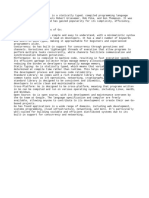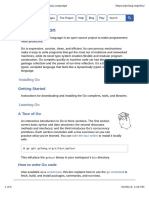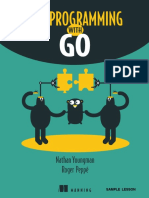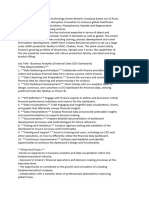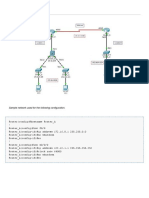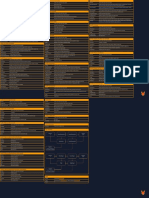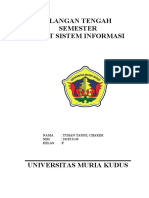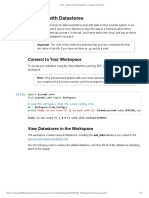Introduction to Go (Programming Language)
1. Overview
Go, also known as Golang, is an open-source programming language developed by Google in 2007. It
was designed by Robert Griesemer, Rob Pike, and Ken Thompson. Go is known for its simplicity,
efficiency, and strong support for concurrent programming, making it ideal for building scalable and
reliable software systems. The language's design philosophy emphasizes ease of use, performance,
and productivity.
2. Key Features
2.1 Simplicity and Efficiency
• Clean Syntax: Go's syntax is concise and straightforward, making it easy to learn and write.
• Compiled Language: Go compiles directly to machine code, resulting in fast execution times
and efficient resource usage.
2.2 Concurrency Support
• Goroutines: Lightweight threads managed by the Go runtime, allowing efficient execution of
concurrent tasks.
• Channels: Typed conduits used for communication between goroutines, facilitating safe data
exchange and synchronization.
• Select Statement: A control structure that allows a goroutine to wait on multiple
communication operations.
2.3 Strongly Typed and Statically Typed
• Static Typing: Go's type system catches errors at compile time, enhancing code reliability.
• Type Inference: While strongly typed, Go supports type inference, allowing the omission of
explicit type declarations in some cases.
2.4 Standard Library and Tooling
• Rich Standard Library: Go includes a comprehensive standard library for tasks like I/O,
networking, and data structures.
• Go Tools: A set of command-line tools for managing code, such as go build, go test, and go
fmt for formatting code.
3. Go Syntax Basics
Hello World Example:
go
Copy code
package main
import "fmt"
func main() {
fmt.Println("Hello, world!")
Key Points:
• Packages: Go programs are organized into packages, with main being the entry point.
• Functions: Defined with the func keyword, followed by the function name and parameters.
Control Structures:
go
Copy code
if condition {
// code to execute if condition is true
} else if anotherCondition {
// code to execute if anotherCondition is true
} else {
// code to execute if none of the conditions are true
• Go supports standard control structures like if, for loops, and switch statements.
4. Concurrency Model
Go's concurrency model is a key feature, enabling efficient and scalable handling of tasks.
• Goroutines: Functions or methods that run concurrently with other functions or methods.
Goroutines are lightweight and managed by the Go runtime, making them much cheaper
than traditional threads.
• Channels: Used to safely communicate data between goroutines. Channels can be buffered
or unbuffered, and can be synchronized using the select statement.
5. Community and Ecosystem
Go has a vibrant and growing community, with an extensive ecosystem of libraries and tools. The Go
community regularly contributes to the language's evolution, providing packages and frameworks for
various use cases, such as:
• Web Development: Popular frameworks like Gin, Echo, and Beego.
• Cloud Services: Go is widely used in cloud services, with tools like Docker and Kubernetes
being written in Go.
• DevOps and Infrastructure: Tools like Terraform and Prometheus leverage Go's performance
and concurrency capabilities.
6. Applications and Use Cases
Go is versatile and used across a wide range of industries and applications. Some notable use cases
include:
• Web Servers: High-performance web servers and APIs.
• Microservices: Scalable microservices architecture, supported by Go's concurrency features.
• Networking Tools: Network tools and utilities, such as load balancers and proxy servers.
• Distributed Systems: Building distributed systems and cloud-native applications.
7. Conclusion
Go is a modern programming language that combines simplicity, efficiency, and powerful
concurrency features. It is well-suited for building scalable and high-performance applications,
particularly in the cloud and distributed systems space. Go's strong standard library, robust tooling,
and active community make it an excellent choice for developers seeking productivity and reliability.
8. Further Reading and Resources
• Go Official Website
• The Go Programming Language (Book)
• Effective Go (Official Documentation)



